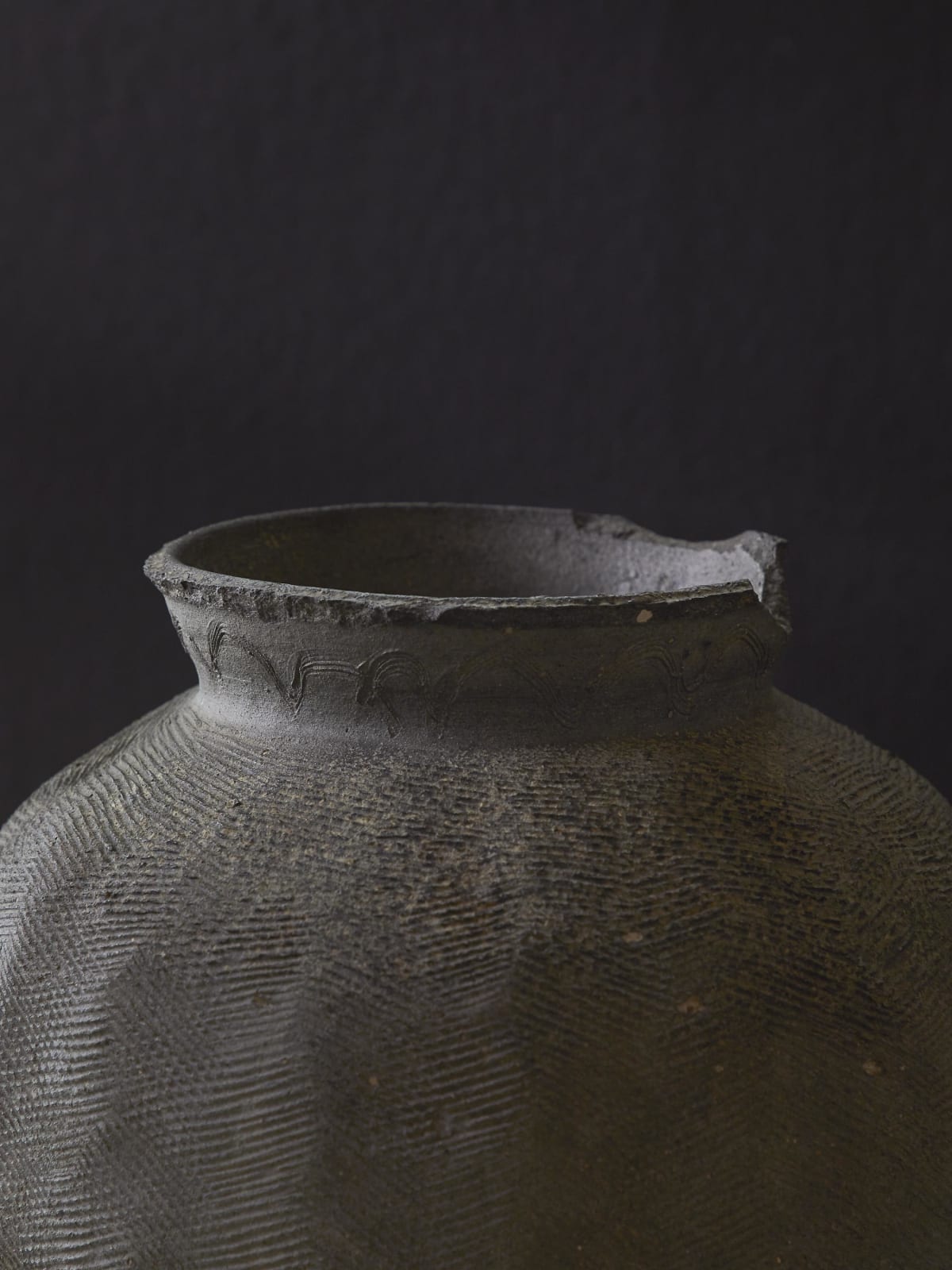Suzu Ware Paddled Jar with Herringbone Pattern
Late Kamakura period (13th century)
W28.4 x H34.3 cm
W28.4 x H34.3 cm
Literature
Echizen, Suzu. Vol. 5 of Nihon no toji: Kodai chusei-hen. Tokyo: Chuo Koron-sha, 1976.Fine Work of Suzu Ware. 3rd ed. Suzu: Municipal Museum of Suzu Ware, 2016.
Suzu ware is a type of ceramic that was produced in the vicinity of present-day Suzu city, which is located at the tip of the Noto Peninsula. Works of this type were distributed widely from the Hokuriku region northward along the Japan Sea side of Japan, indicating a far-reaching scope of circulation. Starting around the middle of the twelfth century (late Heian period) and continuing throughout the Kamakura and Muromachi periods, these wares flourished until they are believed to have come to an end at the end of the fifteenth century (late Muromachi period). The style is distinguished by a blue-gray or gray-black vessel color and blackening of the iron in the clay minerals that resulted from reduction firing in anagama tunnel kilns. Vessels are not glazed and are decorated with incised line carving or impressed stamping.
This jar is considered to have been produced in the late Kamakura period, at the height of Suzu ware production, and the paddled zigzag herringbone pattern covering the whole surface is striking. In a technique considered to be a feature of works of the thirteeth and fourteenth centuries, the initial shape was first formed by coil building, then it was beaten with a paddle engraved with linear grooves to seal the coils, resulting in a polyhedral form comprised of a series of small, flat surfaces each marked by a cluster of parallel incised lines. While the vessel form is relaxed and serene, at the same time the refreshing rise of the lip of the vessel and the careful uniformity of the incised geometrical pattern create a cool and dignified impression. The neck is circled with a wavy five-lined comb pattern and, although there are some chips on the lip, it also displays a band of delicate wave patterns along the sloping surface that results from the outward flaring of the very upper edge of the mouth of the jar. The faintly green-gray layer of natural glaze resulting from a dusting of ash during the firing that graces the shoulder of the vessel.
This jar is considered to have been produced in the late Kamakura period, at the height of Suzu ware production, and the paddled zigzag herringbone pattern covering the whole surface is striking. In a technique considered to be a feature of works of the thirteeth and fourteenth centuries, the initial shape was first formed by coil building, then it was beaten with a paddle engraved with linear grooves to seal the coils, resulting in a polyhedral form comprised of a series of small, flat surfaces each marked by a cluster of parallel incised lines. While the vessel form is relaxed and serene, at the same time the refreshing rise of the lip of the vessel and the careful uniformity of the incised geometrical pattern create a cool and dignified impression. The neck is circled with a wavy five-lined comb pattern and, although there are some chips on the lip, it also displays a band of delicate wave patterns along the sloping surface that results from the outward flaring of the very upper edge of the mouth of the jar. The faintly green-gray layer of natural glaze resulting from a dusting of ash during the firing that graces the shoulder of the vessel.



